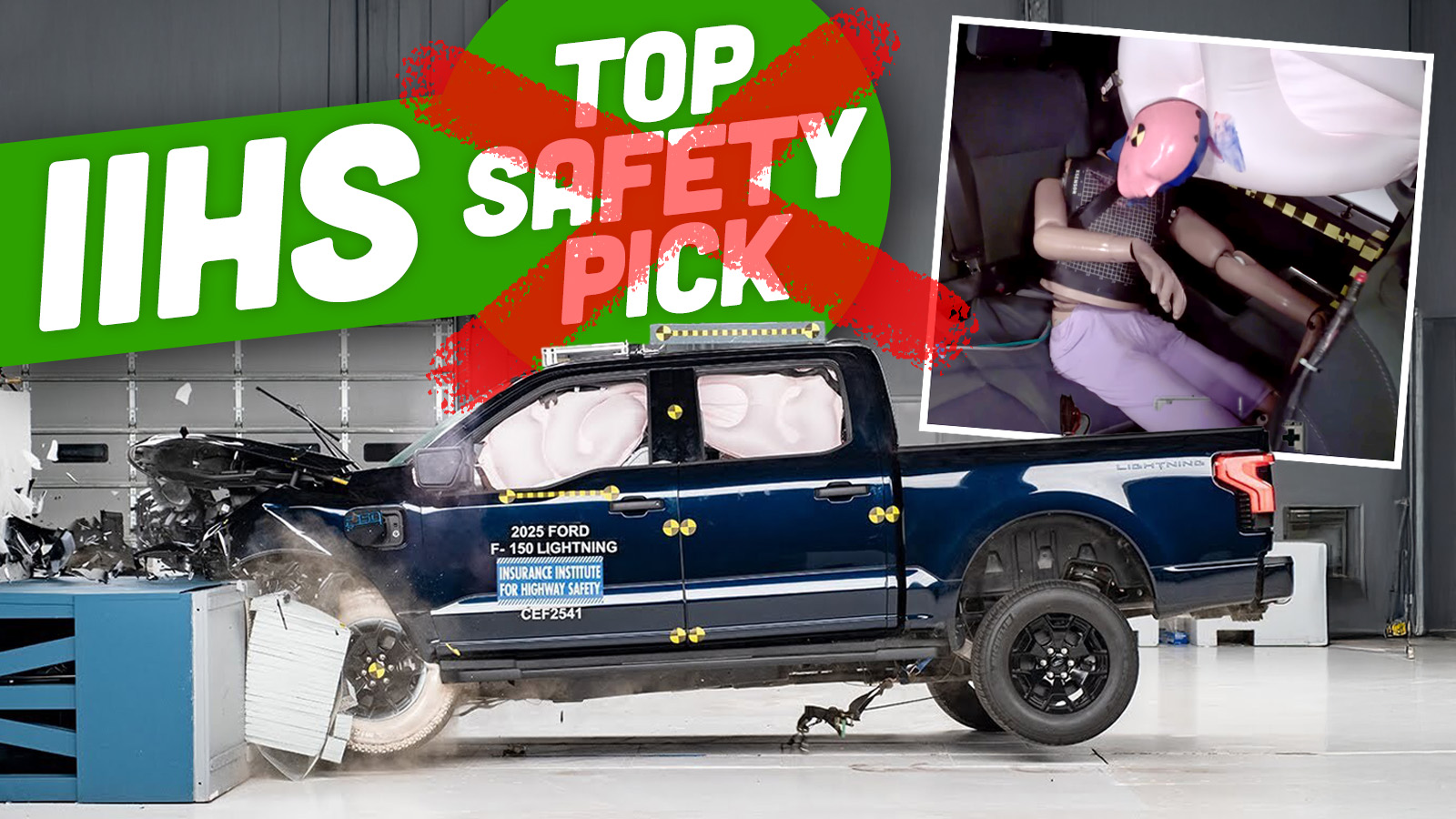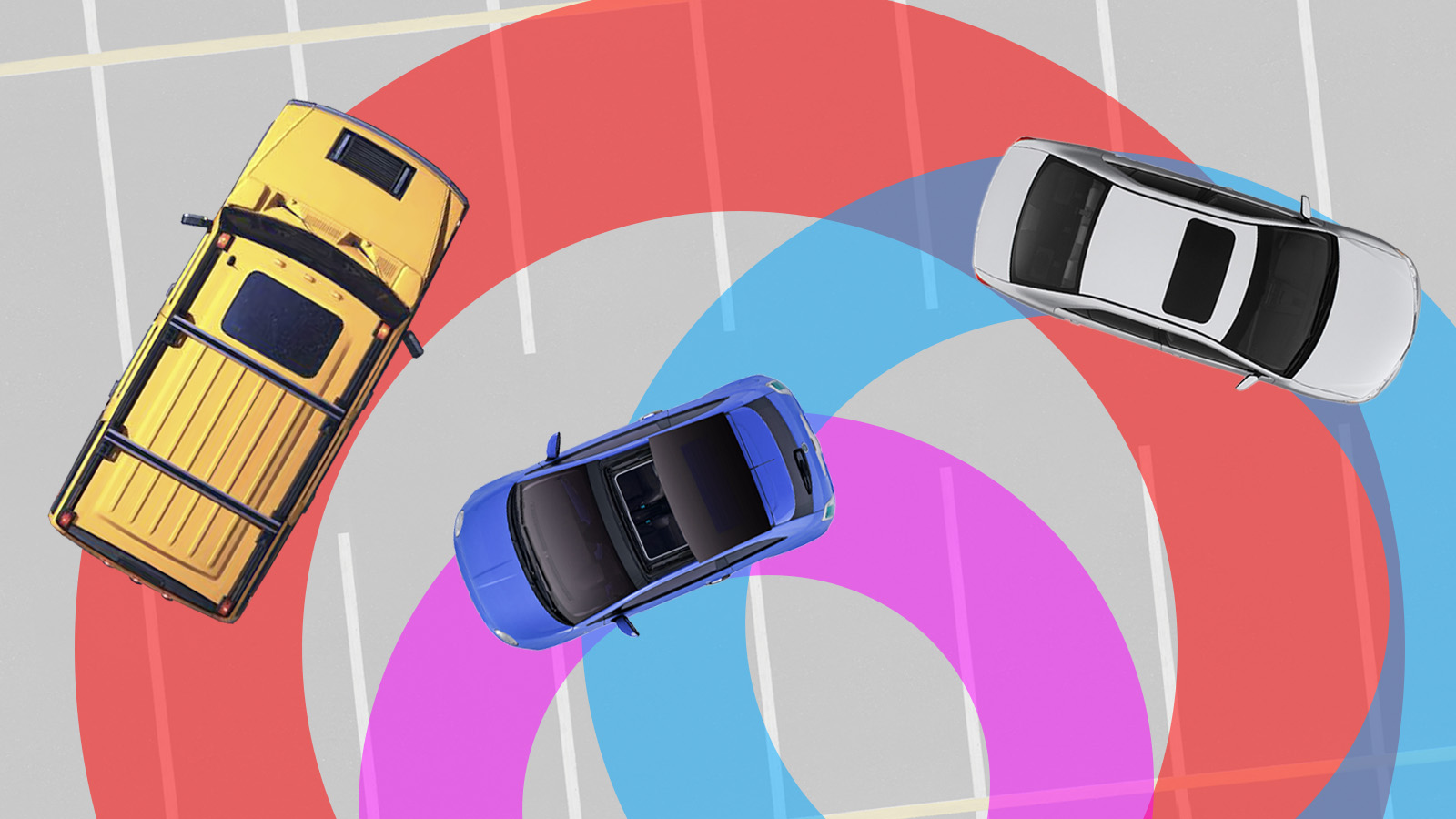Tractor-trailers are among the heaviest vehicles you’ll see on your daily commute. So many of the regulations that keep you safe have been written in blood, including the regulation that mandates the use of thick bars on the back of truck trailers to keep you alive. These bars are supposed to save your life in a crash, but they might not always be as sturdy as they appear.
Earlier today, Matt wrote about a Chinese crash test involving 30 cars meeting the business end of a semi-trailer. It’s a spectacular watch, but it’s important, from Matt:
Specifically, the cars are crashed directly into the back of a tractor-trailer equipped with a set of underride guards or Mansfield bars at about 34 mph. The bars are so named for the actress Jane Mansfield, who people think was decapitated in a crash with a tractor-trailer lacking such a device. In reality, Mansfield wasn’t decapitated, though she was killed and did suffer a serious head injury.

Today, every trailer you see on the road is supposed to have a bar that prevents your vehicle from riding under the trailer in a crash. However, not every Mansfield bar is created equal. Last year, ProPublica published an explosive exposé on the dangers of these bars. In short, the publication revealed that for decades, the American government allowed trailer manufacturers to equip trailers with weak bars, leading to fatalities in even relatively low-speed crashes. The government has slowly updated regulations and the bars have gotten better over the years, but many feel the government hasn’t gone far enough. Click here to read the article, it’s worth it.
Here’s an older IIHS video showing how bad things used to be:
Anyway, SoCoFoMoCo points this out:
The problem here isn’t the cars; it’s the underride bars on the trucks. Many are inadequate and will collapse with any significant impact, allowing the vehicle to go under the trailer. It is possible, and much easier, to make the underride bars stronger than to build vehicles that can withstand this sort of crash.
SoCoFoMoCo followed it up with a link to this excellent Frontline documentary:
This morning, Mark gave us a showdown between a Pontiac Grand Prix and a Yugo. But hold on, what shenanigans are going on here? From Matt Sexton:
Dude I clicked on the Yugo ad and it says: “Title status: lien”. Fucking why.
Also, telling us it ran when parked in 2001 is pointless information. The junkyard is full of cars that ran in 2001. That was 23 years ago.
Despite this, I’m picking the Yugo. Even fixed up, the Pontiac is boring as hell, and I say this as a Pontiac guy. Yugos are dirt simple, this one can be cleaned up relatively easy. Drive it around and you will get constant reactions to it, most of them good. Take it to a car show, park it next to a Chevelle and steal all the thunder. I speak from experience. Get a timing belt before you do anything.

Rivers wrote a story pointing out that Hertz wants crazy money for its used rental Shelby GT500s. These cars aren’t a steal, but it’s not like Hertz knows a thing or two about that, from Icouldntfindaclevername:
I’d buy it, but you know Hertz will just report as stolen.
Alexk98 had the same idea:
$150k and they’ll still mark it as stolen after the check clears, what a deal!
Fasterlivingmagazine also got me:
Im sure a rental gt500 was very gently driven by responsible people for those 22k miles, very low chance of finding pieces of innocent bystander stuck in the undercarriage.
Have a great evening, everyone!








Saw an older semi trailer on the road several years ago. The trailer had obviously seen better days, as the upper welds of the brace where it was attached to the rear floor on the right side had broken, leaving the left side as the only thing holding the brace to the trailer. As the truck bounced along the way, I could see the brace bouncing along with the trailer.
Yeah. I was caught off guard by the crash testing being done and framed in a way by the agency that it was something the *car manufacturers* need to improve on rather than the much simpler solution of making it so cars don’t get our in a situation where they recreate the Bianchi crash in the first place.
Instead of stiffer and stronger, a better solution (for protecting motorists) would be deformation standards/crash attenuators that would dissipate the energy from the impact.
Also, I’ve seen MANY of these bars deformed on trucks driving down the road, as though they had been impacted (or backed into something, I don’t know). So obviously it’s not just the initial design and requirements, but that they be properly maintained/replaced as well. There may be some intended deformation to absorb energy, I don’t know. But it’s clear there’s no enforcement to ensure these trailers are even driving down the road with their guards in the designed condition. A proper deformable bumper would ensure it’s clear whether maintenance has been performed after an impact.
Many years ago I drove past a horrific scene on a mountain road where a Civic crashed into the rear end of a trailer. More than half the Civic was under the trailer and there was a tarp over the windshield, so I imagine the driver did not survive.
My first year of HS my lab partner and her friends were on their way back to campus in an overloaded 1970s Honda Cvcc when they decided to have a little fun. They caught some air on the hill only to slam into the back of a garbage truck stopped on the other side. She and most of the other kids were killed, at least one decapitated as the car slid under the truck.
So yeah when its car vs truck the truck always wins.
Or you could put down your phone, pay attention behind the wheel, and not crash into the back of the giant semi-trailer. They don’t generally just jump out in front of you. Or as with poor Jane, slowing down on foggy nights is a really good idea too.
Sometimes the big ‘ol semi-truck becomes very stationary very quickly when they hit something in front of them. That could be anything from another truck to an overpass.
Problem is, they don’t even have to be in your lane originally to become your problem.
The one time I saw a person run into the back of a stationary semi we were on a 75 mph highway on a clear sunny day. We came over a rise and it was stopped. I was lucky to be in the adjacent lane. The pickup hit it at full speed. It was a freak occurrence, but just paying attention wasn’t the answer.
Something, something too fast for conditions. 75 MPH is much too fast if that hill can hide a stopped semi truck on a clear, sunny day.
Highway design manual accounts for rises and curves when setting speed limits. There ought to be sufficient time and distance to come to a full stop even when reaction times and road conditions aren’t the best.
This would have been the time when PSL was set correctly.
That is the definition of driving too fast for conditions. If you can’t see, why are you going 75mph? Would you keep going 75mph in dense fog. Well, that guy probably would have.
Tell that to the family of the person who stopped safely, just to get rear ended and pushed into the trailer in front of them.
Stop further back. Problem solved. There is no need to be a foot from the back of the vehicle in front of you.
“ The problem here isn’t the cars; it’s the underride bars on the trucks. Many are inadequate and will collapse with any significant impact, allowing the vehicle to go under the trailer. It is possible, and much easier, to make the underride bars stronger than to build vehicles that can withstand this sort of crash.”
Looking forward to government efficiency expert Elon Musk doing away with such job-killing government regulation as soon as possible.
If everyone drove cars with such advanced tech as Tesla, there will be no accidents ever again. Cars will be so safe they won’t even need bumpers, or airbags, or freedum killing seatbelts, even!!!
/s